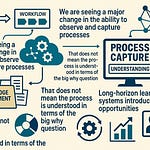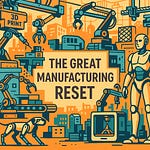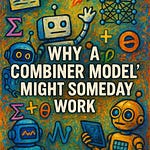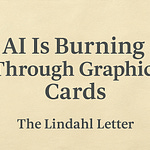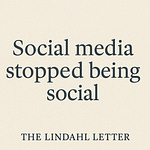Day after release update: I guess it was the 208th post where we hit the proverbial wall with a dud of a post. This post in retrospect turned out to be one of my weaker efforts. I thought it was a strong take about dealing with the rate of change in model development, but it was just not focused and targeted based on delivering quality and insights.
Thank you for tuning in to week 208 of the Lindahl Letter publication. A new edition arrives every Friday. This week the topic under consideration for the Lindahl Letter is, “Building with constant model churn.”
Developers have spent a lot of time in the past patching software. That happens based on vulnerabilities, edge cases, and performance issues. All this vibe-coded content and things built on models are not getting any patches to make them better going forward. You may get a new release or a new model, but that patch to save you from vulnerabilities is not being developed and is not on the way. It is the nature of modern development. The ecosystem of dependencies is real. However, the pace of model development has created an unusual environment for anyone trying to build durable systems.
You cannot really hot swap models within production systems. That just does not work. In the last five years, we have seen large language model releases from OpenAI, Anthropic, Google, Meta, Mistral, Cohere, and several open-source groups. Each iteration has been faster, larger, and sometimes more efficient than the one before. What has not been stable is the interface between models and the systems people build around them. Even seemingly small changes in context window size, output quality, or API availability ripple outward and cause redesigns, migrations, and sudden pivots. Sometimes these changes happen with no warning whatsoever.
For builders, this creates a paradox. The potential upside of adopting a newer model is undeniable: better reasoning, lower costs, and expanded capabilities. At the same time, the risk of betting on an API or framework that may be deprecated in months is a constant concern. Some developers chase every release, weaving the newest model into their applications as quickly as possible. Others step back, building abstractions and wrappers that allow for switching models without disrupting core workflows. Neither path offers complete insulation from this wave of almost continuous churn.
The history of technology offers parallels. Software engineers have long had to deal with shifting operating systems, frameworks, and libraries. What makes this moment different is the velocity of change and the sheer dependency of emerging applications on model behavior. The model is not just another dependency, it is the foundation of the system. When that foundation shifts, everything built on top of it must be reconsidered.
There is also a deeper strategic question. Should builders lean into constant change and accept churn as a feature of the landscape? Or should they try to design in ways that minimize dependency, focusing more on proprietary data pipelines, unique integrations, and distinctive user experiences? Both strategies reflect an awareness that stability is not guaranteed in this ecosystem. The companies that endure will be the ones that treat churn not as an annoyance but as a design constraint.
Things to consider:
The lack of patching for AI models makes long-term maintenance difficult.
Model churn introduces structural instability into modern systems.
Abstraction layers help, but they cannot prevent cascading change.
Treating churn as a core design constraint is a pragmatic approach.
Builders must balance innovation speed with long-term stability.
What’s next for the Lindahl Letter? New editions arrive every Friday. If you are still listening at this point and enjoyed this content, then please take a moment and share it with a friend. If you are new to the Lindahl Letter, then please consider subscribing. Make sure to stay curious, stay informed, and enjoy the week ahead!




